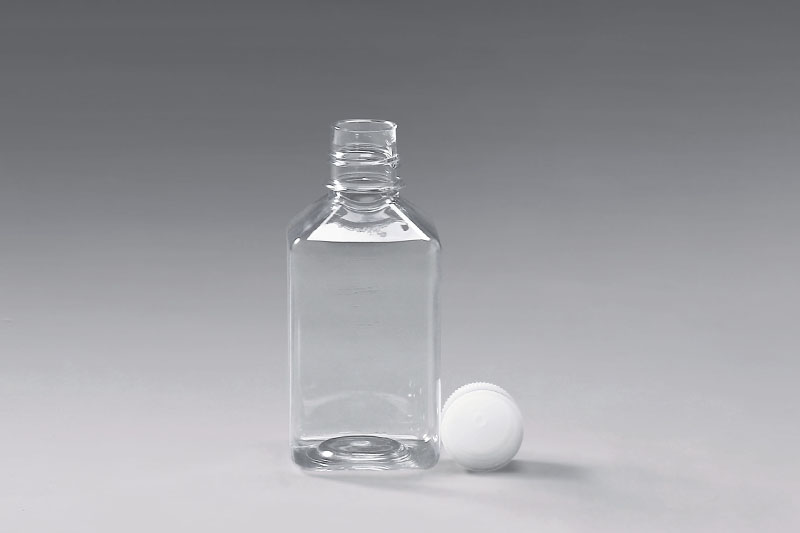Media bottle is a special package for storing serum, and its production materials include glass and plastic. With the rapid development of science and technology, various excellent properties of polymer materials have been continuously explored, and plastic media bottles have gradually replaced glass materials, which has become the trend of future development.
Although glass material has high transparency, it is heavy and fragile, which is not conducive to transportation. Glass products have poor temperature resistance and are prone to burst due to temperature changes, which is dangerous, while plastic materials can completely avoid the above shortcomings. Common plastic media bottles are generally made of polyester (PET) material. This raw material also has high transparency, good heat aging resistance, and still has certain toughness at -30 °C, while serum needs to be at -5 °C to -20 °C. environmental storage, PET material perfectly caters to this characteristic.
In addition, the media bottle of PET material has good mechanical properties, and the impact strength is 3-5 times that of other films. In terms of production, PET can be produced in a fully automatic assembly line, and the bottle is silent and not broken. Compared with glass bottles, it has lower shipping costs. Serum bottles made of plastic save time by eliminating the need for laborious pre-cleaning like glass.
On the whole, plastic media bottles are superior to glass ones in terms of product performance, automated production and transportation costs. With the continuous development of biotechnology, the demand for serum as a nutrient for cell growth continues to rise, and plastic media bottles will also become a trend.
The FAI climbed 5.9 percent year-on-year in the first 11 months of 2018, quickening from the 5.7-percent growth in Jan-Oct, the National Bureau of Statistics (NBS) said Friday in an online statement.
The key indicator of investment, dubbed a major growth driver, hit the bottom in August and has since started to rebound steadily.
In the face of emerging economic challenges home and abroad, China has stepped up efforts to stabilize investment, in particular rolling out measures to motivate private investors and channel funds into infrastructure.
Friday's data showed private investment, accounting for more than 60 percent of the total FAI, expanded by a brisk 8.7 percent.
NBS spokesperson Mao Shengyong said funds into weak economic links registered rapid increases as investment in environmental protection and agriculture jumped 42 percent and 12.5 percent respectively, much faster than the average.
In breakdown, investment in high-tech and equipment manufacturing remained vigorous with 16.1-percent and 11.6-percent increases respectively in the first 11 months. Infrastructure investment gained 3.7 percent, staying flat. Investment in property development rose 9.7 percent, also unchanged.
 English
English



















































